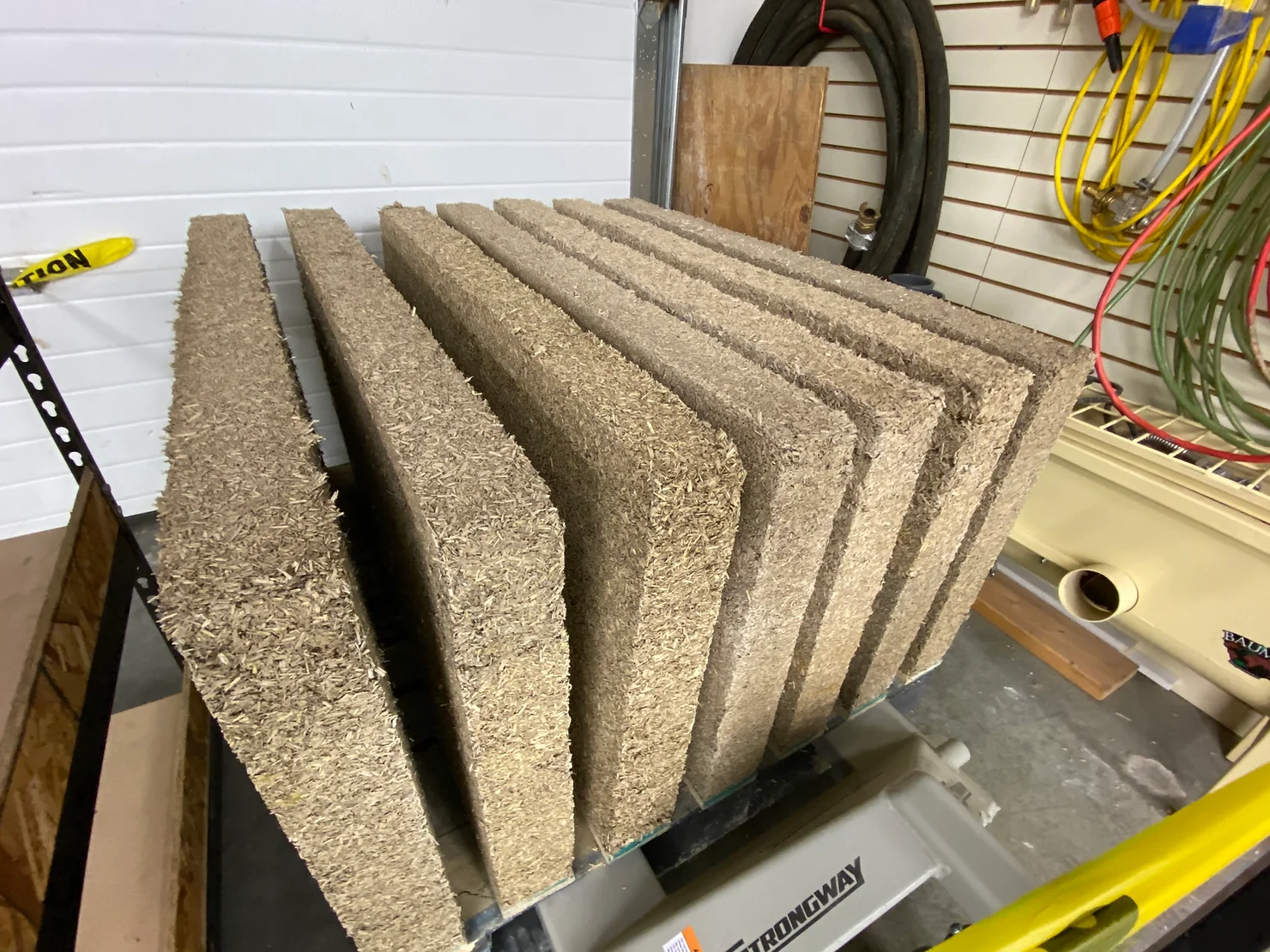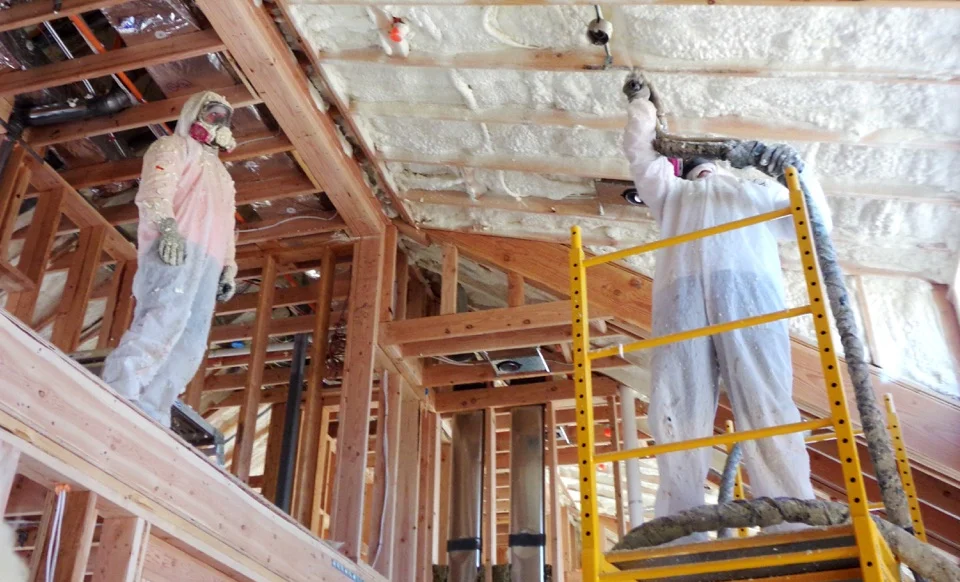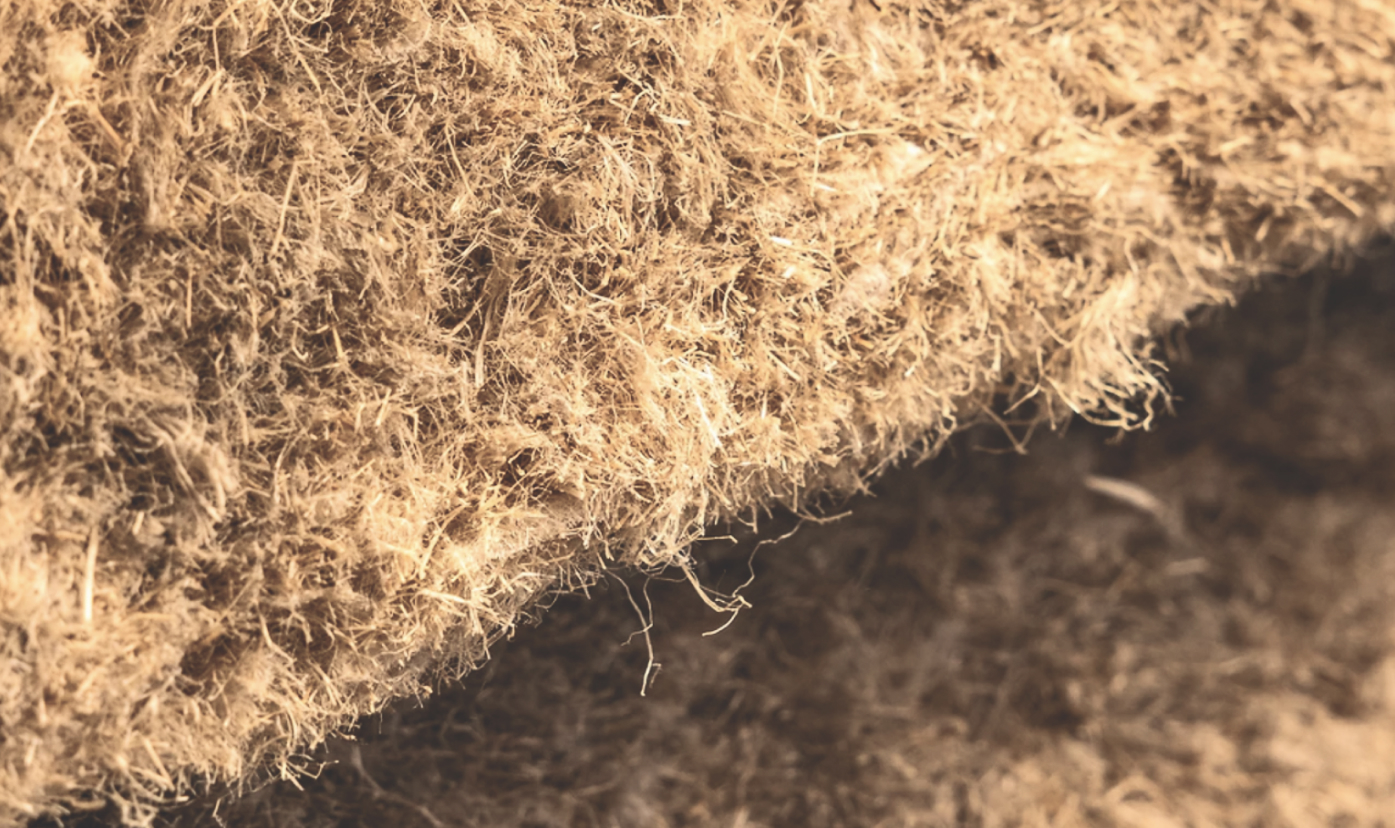Insulation plays a crucial role in maintaining energy efficiency and comfort in buildings by reducing heat transfer. There are several common materials used for building insulation, each with its own advantages and disadvantages.
Here are some of the most commonly used materials for building insulation:
- Fiberglass insulation is one of the most commonly used types of insulation. It is made of tiny glass fibers that are either blown or spun into a fluffy material and is commonly used in attics, walls, and crawl spaces. Fiberglass insulation has good thermal resistance properties, is affordable, and is widely available. However, fiberglass insulation can cause health concerns if not handled properly and has a significant environmental impact.
- Mineral wool insulation is made from rock or slag fibers. It is available as batts or loose-fill. Mineral wool insulation is fire-resistant and provides excellent sound absorption as well as thermal insulation. However, it is extremely energy-intensive and has high embodied energy.
- Cellulose insulation is composed of recycled paper materials, such as newspapers, treated with fire retardants. It is available as loose-fill or blown-in insulation. Cellulose insulation is environmentally friendly, has good thermal resistance, and can be used in various applications.
- Spray foam insulation is a polyurethane-based material that is sprayed into place. It expands and hardens to provide an airtight seal. Spray foam insulation offers excellent thermal insulation properties and can help reduce air leakage effectively.
- Polystyrene insulation comes in two main forms: expanded polystyrene (EPS) and extruded polystyrene (XPS). EPS is available as rigid foam boards, while XPS is commonly found as rigid foam panels. Polystyrene insulation has good thermal resistance and moisture resistance properties.
- Polyurethane foam insulation is a versatile material that can be sprayed or injected into walls, ceilings, and other cavities. It provides excellent insulation and air-sealing properties. Polyurethane insulation is commonly used in commercial and residential construction.
- Reflective insulation, often in the form of foil-faced panels or radiant barriers, reflects heat away from the building. It is commonly used in hot climates to reduce radiant heat gain.
While all of the above use chemicals and have environmental considerations, we will focus on fiberglass as it is the most commonly used insulation.
Health Concerns of Fiberglass Insulation:
Direct contact with fiberglass insulation can cause irritation, itching, and redness on the skin. The tiny glass fibers can prick the skin and cause discomfort. It is advisable to wear protective clothing and gloves when handling fiberglass insulation. Fiberglass fibers can cause eye irritation if they come into contact with the eyes. Safety glasses or goggles should be worn to protect the eyes during the installation or removal of fiberglass insulation. The primary concern associated with fiberglass insulation is the inhalation of tiny airborne glass fibers. These fibers can become airborne during installation, removal, or if the insulation is disturbed. Inhaling these fibers may irritate the respiratory system and cause coughing, throat irritation, and breathing difficulties. Prolonged exposure to airborne fiberglass fibers, especially in high concentrations, may increase the risk of developing respiratory conditions like asthma or bronchitis.

A Radical New Alternative!
Industrial hemp insulation is a bio-based material gaining popularity as an alternative to traditional fiberglass insulation due to several notable advantages. Here are some reasons why industrial hemp insulation is considered an amazing alternative:
Sustainable and Renewable: Industrial hemp is a rapidly renewable resource that can be grown and harvested within a short period. It requires minimal water, pesticides, and fertilizers compared to other crops. The cultivation of hemp also helps sequester carbon dioxide from the atmosphere, making it an environmentally friendly option.
Excellent Thermal Insulation: Hemp insulation offers excellent thermal insulation properties, helping to reduce heat transfer and maintain comfortable indoor temperatures. It effectively insulates against both cold and hot temperatures, enhancing energy efficiency and reducing heating and cooling costs.
Moisture Regulation: Hemp insulation has natural hygroscopic properties, meaning it can absorb and release moisture. It helps regulate indoor humidity levels by absorbing excess moisture from the air and releasing it when the humidity decreases. This feature prevents the growth of mold and mildew, contributing to healthier indoor air quality.
Sound Absorption: Hemp insulation has superior sound absorption capabilities, reducing noise transmission between rooms or from outside sources. It can improve acoustic comfort by minimizing echoes, vibrations, and airborne sounds.
Non-Toxic and Safe: Unlike fiberglass insulation, industrial hemp insulation is non-toxic and does not contain harmful chemicals or volatile organic compounds (VOCs). It does not cause skin or respiratory irritation during installation, making it a safer option for both installers and occupants.
Pest and Fire Resistance: Hemp fibers possess natural resistance to pests, insects, rodents, and molds, reducing the need for additional chemical treatments. Additionally, hemp insulation is naturally fire-resistant and does not release toxic fumes when exposed to flames.
Sustainable Manufacturing Process: The production of hemp insulation typically involves low-energy manufacturing processes, reducing the overall environmental impact. It is often produced using water-based binders or natural resins, further minimizing the use of synthetic materials.
Longevity and Durability: Industrial hemp insulation is known for its long lifespan and durability. It does not settle or compress over time, ensuring consistent thermal performance throughout its lifespan.
It’s important to note that industrial hemp insulation may be more expensive than fiberglass initially, but its long-term benefits and eco-friendly nature make it a compelling choice for those seeking sustainable and healthier insulation options.
Side-by-side comparison between traditional fiberglass insulation and industrial hemp insulation.
Let’s compare fiberglass insulation and hemp insulation across various aspects:
Installation: Fiberglass insulation typically comes in pre-cut batts or rolls, making it relatively easy to install in walls, attics, and other areas. Hemp insulation is available in batts or loose-fill form, requiring similar installation techniques. Both types can be installed by homeowners or professionals.
Thermal Insulation: Both fiberglass and hemp insulation provide effective thermal insulation by reducing heat transfer. They have comparable R-values (a measure of thermal resistance), indicating their ability to resist heat flow. The specific R-value can vary depending on the thickness and density of the insulation.
Sound Insulation: Hemp insulation is generally considered superior in terms of sound absorption compared to fiberglass insulation. Hemp fibers have natural acoustic properties that help dampen sound waves, reducing noise transmission between rooms and from outside sources.
Moisture Regulation: Hemp insulation has natural hygroscopic properties, allowing it to absorb and release moisture. This helps regulate indoor humidity levels and prevents the growth of mold and mildew. Fiberglass insulation, on the other hand, does not possess inherent moisture regulation capabilities.
Environmental Impact: Hemp insulation is considered a significantly more sustainable and eco-friendly option compared to fiberglass. Hemp is a renewable resource that requires minimal water, pesticides, and fertilizers for cultivation. It sequesters carbon dioxide during growth and can contribute to soil health. Fiberglass is made from glass fibers, which are derived from sand, but the manufacturing process involves significant energy consumption and can produce waste.
Health Concerns: Fiberglass insulation has been associated with potential health concerns, particularly skin and respiratory irritation if the tiny glass fibers come into direct contact or become airborne. Hemp insulation, on the other hand, is non-toxic, does not contain harmful chemicals, and is generally considered safe to handle.
Cost: Fiberglass insulation is generally more affordable than hemp insulation, primarily due to its widespread availability and larger-scale production. Hemp insulation may have a higher initial cost, but its long-term benefits and sustainability aspects may outweigh the price difference for some individuals.

In conclusion, when it comes to choosing insulation for your building, the decision should go beyond the immediate cost and consider the long-term benefits, environmental impact, and health considerations. Fiberglass insulation has been the go-to option for many years due to its affordability and thermal resistance. However, it comes with health concerns and a significant environmental footprint.
Industrial hemp insulation emerges as a radical new alternative that addresses these concerns. HempWool insulation offers a sustainable and renewable solution, harnessing the benefits of industrial hemp cultivation while sequestering carbon dioxide, and is an American Made building material. It provides excellent thermal insulation, regulates moisture, absorbs sound, and exhibits natural pest and fire resistance. Moreover, it is non-toxic, safe to handle, and has a low environmental impact throughout its manufacturing process.
Although hemp insulation may have a higher initial cost compared to fiberglass, its long-term advantages, including energy efficiency, healthier indoor air quality, and durability, make it a compelling choice for those seeking sustainable and eco-friendly insulation options. By choosing HempWool insulation from Hempitecture, Buy.hempitecture.com, you not only invest in a high-quality insulation material but also contribute to a greener and healthier future for your building and the planet.
Make the conscious choice to go beyond fiberglass and embrace the sustainable, safe, and efficient qualities of HempWool insulation. Visit Buy.hempitecture.com today to experience the benefits of this innovative bio-based insulation material firsthand.



